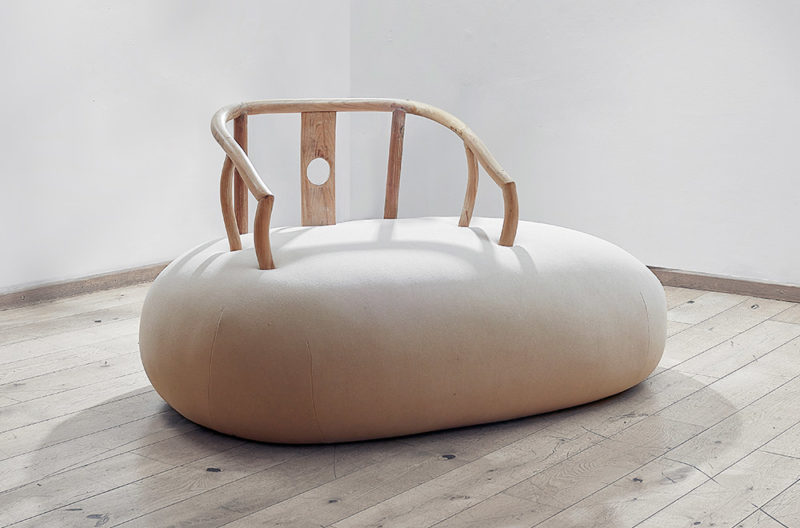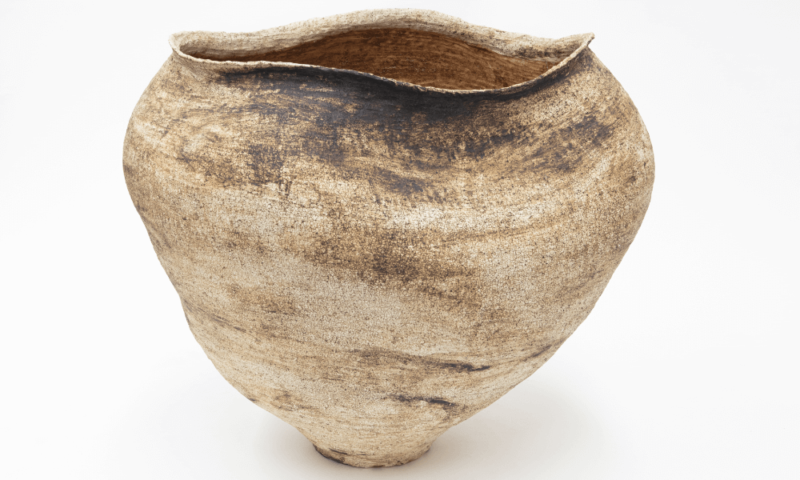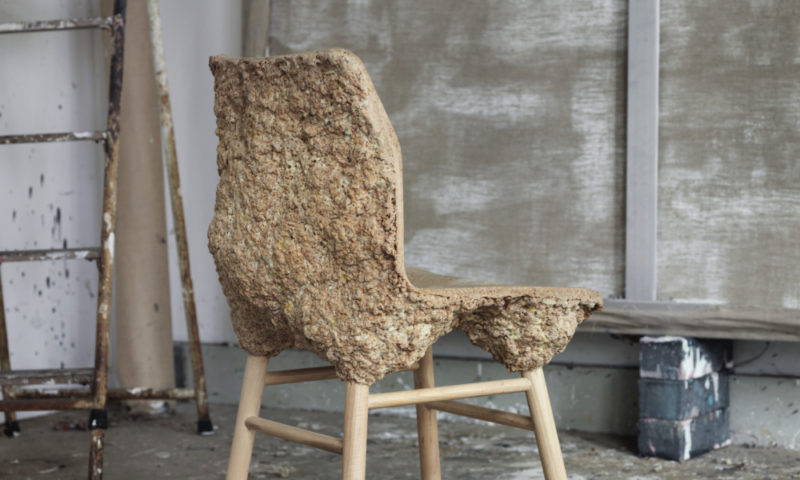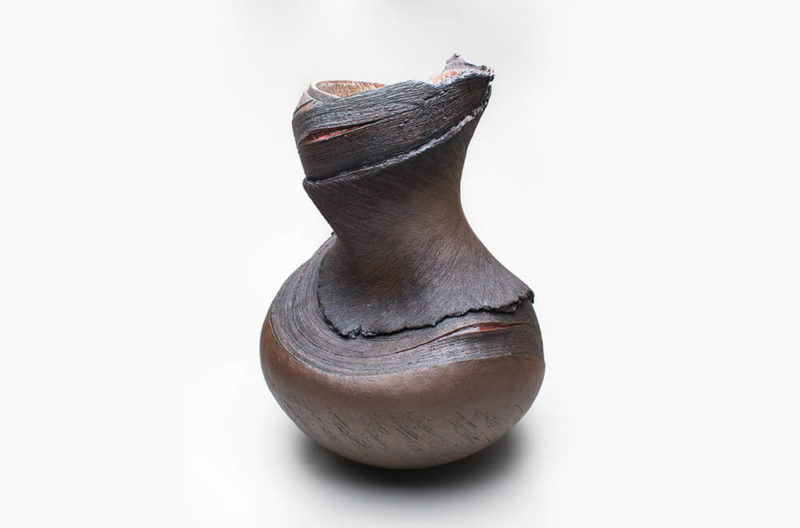‘Miniature from the Tower of Babel’, 2015
Barnaby Barford
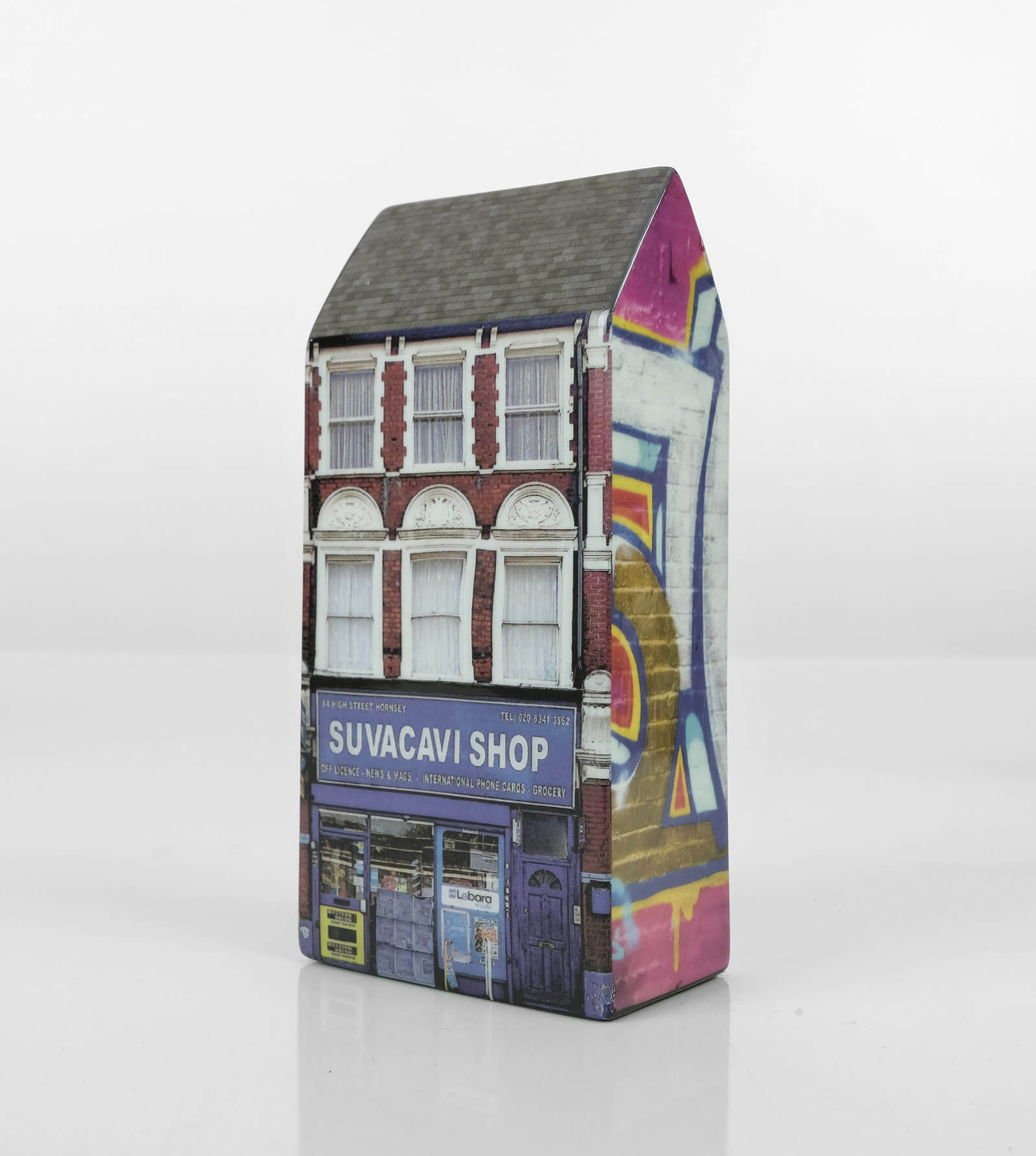
Barnaby Barford, ‘Miniature from the Tower of Babel’, 2015
COURTESY: Barnaby Barford / PHOTOGRAPH: Dan Fontanelli
THIS WEEK’S OBJECT is a conceptual artwork that has its roots in craft and industrial design. It is up for sale as part of a single lot of eleven miniature slip-moulded buildings, each depicting a London shop-front, the image a photograph transfer printed onto the model. They were created for Barford’s celebrated installation, ‘Tower of Babel’, in the Victoria and Albert Museum. That Tower was a portrait of London – a teeming termite mound of commerce – as Barford saw it, in 2015, when the project was installed. He is not a shopper himself, but sees bemusedly how shopping has become our national pastime. As he said at the time, “London doesn’t look like Big Ben or St Paul’s, it looks like this. These shops are the wallpaper of our streets. This is London.”
The individual object itself is born out of Barnaby Barford’s interest in industrially-made ceramics and the history of decorative arts. A student at the Royal College of Arts, it was not the handling of clay that excited him, but what you could do with moulds and repetition. His first artworks were created from found objects and antique figurines, repainted and repurposed for subversive ends. Items teetering on kitsch became elements within satirical scenarios, their sweetness belying the kick of social or political comment. This miniature shares with those rescued figurines a respect and affection for industrial process. It was made in Stoke on Trent, the historic capital of British ceramics, in bone china, that quintessentially British product (the invention of Josiah Spode The Second around 1800). And it is beautifully finished – the edges touched up by hand with paint once the photographic image has been transferred, before the final firing. It shares a form with countless cute ceramic cottages and castles sold in gift shops around the country.
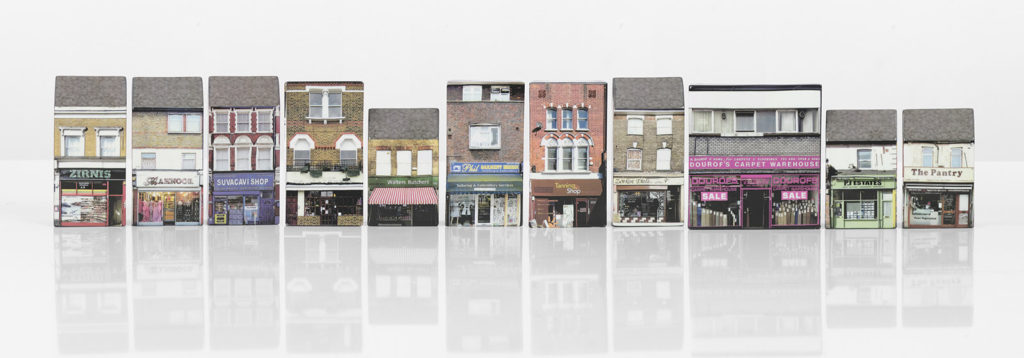
Barnaby Barford, ’12 individual bone china buildings from the Tower of Babel’, 2015
COURTESY: Barnaby Barford / PHOTOGRAPH: Dan Fontanelli
But what transforms the meaning of Barford’s building, beyond the obvious first shock of its contemporary decoration, is its place within Barford’s project. The artist cycled over 1,000 miles through London to photograph over 6,000 shop fronts, from High Barnet to Catford, from Hanwell to Manor Park. This became a massive exercise in social history, capturing the wildly various cultural make-up of this diverse city, with its dramatic discrepancies of wealth, and divergencies of taste and habit. Where the Tower of Babel was an act of hubris which God punished – by scattering human beings and separating them by language – London’s sprawling metropolis is a humble, ad hoc, accidental construction of individuals drawn from myriad races, speaking myriad languages. But Barford is no sentimentalist, so the Tower displayed graphically the hierarchies implicit in the city’s geography. He placed the boarded-up and abandoned shops in the bottom layer, leaving for the pinnacle Mayfair auction houses and other luxury emporia. Moreover, the prices of these individual buildings (sold to benefit the V&A), were set not according to the prestige of the artist, or the size of the object, but according to where they were placed on the pyramid: from £95 to £6,000, rising by minute gradations, just like the London property market. As we all know, London’s wealth, indeed the whole British economy, is driven by our national love of shopping for houses.
The eleven buildings on sale now were Barford’s response to ceramic artist Kate Malone MBE’s call to contribute to the charity auction FiredUP4, which is raising funds to provide pottery studios, equipment and training to two OnSide Youth Zones. The sale, run by ceramic specialists Maak, now open online, ends on Thursday 19th November. 32 leading British ceramicists were invited to make something with 3 kg of clay, but, as Barford says wryly, “I don’t really make anything with clay, myself,” so he has offered 3 kg of buildings. Worth their weight in gold, I would say.
Barnaby Barford – is best known for his sculptural work using ceramics in unexpected ways.
David Gill – has been exhibiting contemporary art and design by leading international artists for over 30 years in London.
FiredUP4 – an auction of contemporary ceramics to raise invaluable funds to facilitate pottery studios in two Youth Zones in Chorley and Wigan.
Maak – a specialist art consultancy dedicated to contemporary ceramics with regular auctions featuring works by the leading names in studio pottery.




